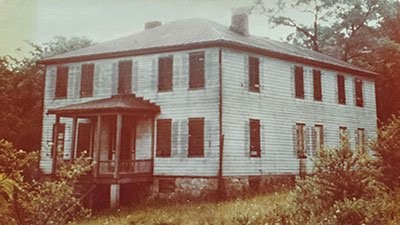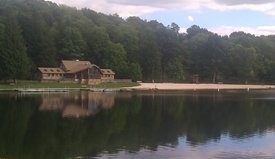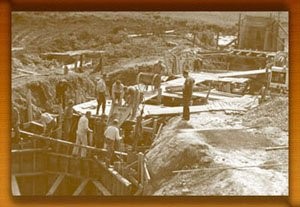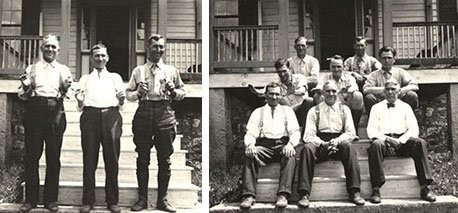Herrington Manor State Park
Introduction
Text-to-speech Audio
Images
The Herrington Manor House, taken in 1940, taken 24 years before it was demolished; the latest photo of the house ever taken; photo courtesy of the Maryland Department of Natural Resources

View of Herrington Manor State Park with the Visitor Center and the lake shown, both of which were built by the Civilian Conservation Corps; photo courtesy of Maryland Department of Natural Resources

One of the twenty cabins located at Herrington Manor State Park, photo courtesy of Maryland Department of Natural Resources

Construction of the dam that would form into a lake at Herrington Manor; taken in 1934 when the Civilian Conservation Corps began conducting projects at Herrington Manor, photo courtesy of Maryland Department of Natural Resources

Resident Wardens in front of the Herrington Manor House, 1932, photo courtesy of Maryland Department of Natural Resources

Backstory and Context
Text-to-speech Audio
After Herrington's death, the Herrington Manor house changed ownership several times until 1913 when Abraham Lincoln Sines and Edmund George Prince, the wardens of the Maryland Board of Forestry, purchased the house and its property. Four years later, 700 acres of forested land was added and given to the Maryland Forest Reserve by U.S Ambassador to France Henry White and his brother, Julian Leroy White. During that time, Maryland Forester Fred W. Besley opened the Herrington Manor Reserve, ensuring the sustainability of the vast amount of white oak trees, which represent the natural beauty of the Western Maryland region, as well as to allow tourists to visit the land.
In 1935, the state of Maryland purchased the house in order to accommodate members of the Civilian Conservation Corps, who operated numerous projects at what is now Herrington Manor State Park. The Civilian Conservation Corps was a New Deal program established by President Franklin D. Roosevelt in 1933 that consisted of 20,000 young unemployed men who worked in several conservation areas around the country. Specifically in Maryland, the CCC worked at 15 different forested areas around the state of Maryland, with one of them being at Herrington Manor. The most prominent construction projects at Herrington Manor included a dam that would form Lake Herrington, a trail that connects Herrington Manor and Swallow Falls State Parks, ten of the current twenty cabins, and a restroom facility that currently sits beside Lake Herrington. Until 1942 when the country became economically stable, the Civilian Conservation Corps continued to operate numerous conservation projects around the state of Maryland.
By the mid-20th century, the house began to fall apart, and the Maryland Department of Natural Resources demolished it in 1964, leaving behind only remnants of the mansion that can still be seen today. Since its designation as a state park, renovations have been made to the visitor's center, the restrooms, and the campground in order to maintain the park and ensure that visitors and campers have a decent experience. Kayak and canoeing lessons are held at Herrington Manor State Park and rentals are held there as well so that kayakers can experience Mother Nature on the lake. The impact that the park's history has, such as efforts of the Civilian Conservation Corps and the house's transition of ownership, influences the park that exists today.
Sources
Treasures of the West: Herrington Manor and Swallow Falls State Parks. Maryland Department of Natural Resources. . Accessed November 15, 2018. http://dnr.maryland.gov/centennial/Pages/Centennial-Notes/TreasuresofWest.aspx.
"Herrington Manor to State." The Baltimore Sun(Baltimore)September 05, 1917. , 8-8.
The Civilian Conservation Corps Part II: A Maryland Perspective. Maryland Department of Natural Resources. . Accessed November 15, 2018. http://dnr.maryland.gov/centennial/Pages/Centennial-Notes/CCC_History_Part_II.aspx.
